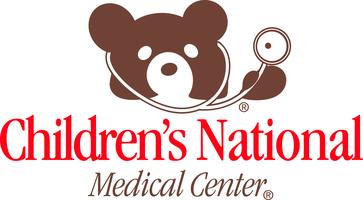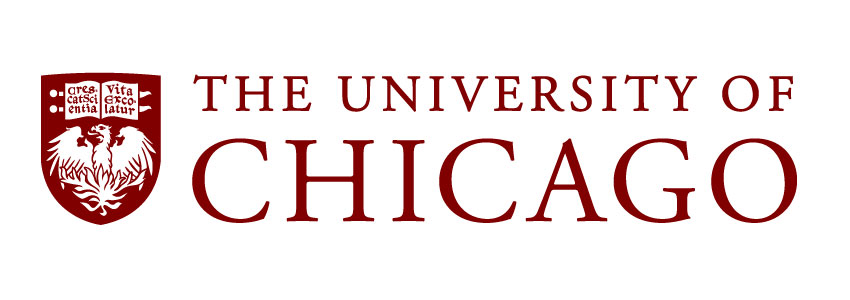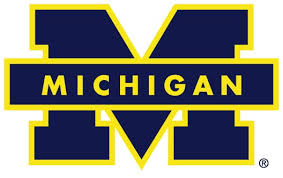Pulmonary Hypertension, Hypoxia and Sickle Cell Disease
| Status: | Completed |
|---|---|
| Conditions: | High Blood Pressure (Hypertension), Neurology, Anemia, Hematology |
| Therapuetic Areas: | Cardiology / Vascular Diseases, Hematology, Neurology |
| Healthy: | No |
| Age Range: | 3 - 20 |
| Updated: | 3/31/2019 |
| Start Date: | June 28, 2007 |
| End Date: | December 2, 2014 |
Pulmonary Hypertension and the Hypoxic Response in SCD
The study will look at the risk factors for pulmonary hypertension (high blood pressure in
the lungs) in children and adolescents with sickle cell anemia (SCA) and examine the role of
hypoxia (oxygen shortage) in the disease. In patients with SCA, red blood cells become
sickle-shaped and tend to form clumps that get stuck in blood vessels, blocking blood flow to
the limbs and organs. Blocked blood vessels can cause pain, serious infections, and organ
damage. Many patients with SCA also develop pulmonary hypertension.
Children and adolescents with SCA or Chuvash polycythemia (another blood disorder that
carries an increased risk for pulmonary hypertension) may be eligible for this study.
Participants undergo the following procedures at the beginning (baseline) and end of the
study:
- History, physical examination and blood tests .
- Echocardiography (ultrasound study of heart function).
- Transcranial doppler (brain ultrasound study to measure brain blood flow).
- Lung function tests.
- 6-minute walk (measure of the distance covered in 6 minutes of walking).
In addition, patients are followed by telephone or by clinic visits every 6 months for a
review of their medical history and medications. A physical examination is also done at 12
months.
the lungs) in children and adolescents with sickle cell anemia (SCA) and examine the role of
hypoxia (oxygen shortage) in the disease. In patients with SCA, red blood cells become
sickle-shaped and tend to form clumps that get stuck in blood vessels, blocking blood flow to
the limbs and organs. Blocked blood vessels can cause pain, serious infections, and organ
damage. Many patients with SCA also develop pulmonary hypertension.
Children and adolescents with SCA or Chuvash polycythemia (another blood disorder that
carries an increased risk for pulmonary hypertension) may be eligible for this study.
Participants undergo the following procedures at the beginning (baseline) and end of the
study:
- History, physical examination and blood tests .
- Echocardiography (ultrasound study of heart function).
- Transcranial doppler (brain ultrasound study to measure brain blood flow).
- Lung function tests.
- 6-minute walk (measure of the distance covered in 6 minutes of walking).
In addition, patients are followed by telephone or by clinic visits every 6 months for a
review of their medical history and medications. A physical examination is also done at 12
months.
The research is designed to determine the prevalence and risk factors of pulmonary
hypertension (PHT) in children and adolescents with sickle cell disease (SCD), and to
determine the role of the hypoxic response in its pathogenesis. In this regard, proliferative
vascular responses mediated by (i) hypoxia inducible factor (HIF)-regulated pathways and (ii)
nitric oxide (NO)-scavenging will be compared between patients with SCD and patients with
Chuvash polycythemia (CP), another hematological disorder characterized by increased risk for
PHT. High throughput microarray and genotyping technologies will be employed to identify
candidate gene pholymorphisms involved in pathologic responses to hypoxia in SCD and CP
patients with and without PHT.
hypertension (PHT) in children and adolescents with sickle cell disease (SCD), and to
determine the role of the hypoxic response in its pathogenesis. In this regard, proliferative
vascular responses mediated by (i) hypoxia inducible factor (HIF)-regulated pathways and (ii)
nitric oxide (NO)-scavenging will be compared between patients with SCD and patients with
Chuvash polycythemia (CP), another hematological disorder characterized by increased risk for
PHT. High throughput microarray and genotyping technologies will be employed to identify
candidate gene pholymorphisms involved in pathologic responses to hypoxia in SCD and CP
patients with and without PHT.
- INCLUSION CRITERIA
A. For PAH in children and adolescents with SCD:
Inclusion criteria for all participants:
1. The informed consent has been signed by the participant, parent or legal guardian as
appropriate.
2. Age of 3 to 20 years.
Inclusion criteria for SCD patients:
1. Diagnosis of sickle cell disease (electrophoretic HPLC documentation of SS, SC, Sb
thalassemia or other major sickling phenotype such as SD, SO-Arab or SLepore is
required).
2. At least three weeks has elapsed since hospitalization for acute chest syndrome, pain
crisis, infection or other complication of SCD.
3. Absence of acute infection, pain crisis, or other acute complication of SCD. (Chronic
SCD complications such as stuttering priapism, stable chronic pain and leg ulcers are
not reasons for exclusion.)
Inclusion criteria for control participants:
1. Self-described race is African American.
2. Absence of diagnosis of SCD as defined above and subsequent electrophoretic or HPLC
documentation.
3. Absence of acute infection, injury, surgery or asthmatic episode.
EXCLUSION CRITERIA:
Exclusion criteria for all participants:
1. Age of less than 3 years or 21 years or more at time of enrollment.
2. Presence of acute infection, pain crisis, injury, surgery, asthmatic episode or other
acute complication.
Exclusion criteria for SCD patients:
1. Hemoglobin A only phenotype, hemoglobin S trait or hemoglobin C trait.
2. Less than three weeks has elapsed since hospitalization for acute chest syndrome, pain
crisis, infection or other complication of SCD.
Exclusion criteria for control participants:
1. Self-described ethnicity other than African American.
2. Diagnosis of SCD or electrophoretic or HPLC documentation of major sickling phenotype
as described above.
B. Angiogenic and vasomotor responses mediated by HIF-regulated pathways in patients with
SCD and CP with and without PAH.
INCLUSION CRITERIA:
Inclusion criteria for all participants:
1. The informed consent has been signed by the participant, parent or legal guardian as
appropriate.
2. Age of 3 years or greater.
3. Absence of acute infection, pain crisis, cerebral vascular accident, thrombosis or
other acute complication.
Inclusion criteria for SCD or CP patients with PAH:
1. Diagnosis of SCD and electrophoretic or HPLC documentation of SS, SC, Sbeta
thalassemia or other major sickling phenotype such as SD, SO-Arab or SLepore OR
diagnosis of CP and evidence of homozygosity for mutation of the von Hippel-Lindau
gene at position 598 from cytosine to thymidine.
2. At least three weeks has elapsed since hospitalization for SCD (acute chest syndrome,
pain crisis, infection or other complication) or CP (cerebral vascular accident,
thrombotic event or other complication).
3. ECHO-determined TRV of 2.5 m/sec or greater.
Inclusion criteria for SCD or CP patients without PAH:
1. Diagnosis of SCD and electrophoretic or HPLC documentation of SS, SC, Sb thalassemia
or other major sickling phenotype such as SD, SO-Arab or SLepore OR diagnosis of CP
and evidence of homozygosity for mutation of the von Hippel-Lindau gene at position
598 from cytosine to thymidine.
2. At least three weeks has elapsed since hospitalization for SCD (acute chest syndrome,
pain crisis, infection or other complication) or CP (cerebral vascular accident,
thrombotic event or other complication).
3. ECHO-determined TRV less than 2.5 m/sec.
4. Matched by age (plus or minus 2 years), sex and ethnicity to a specific patient with
SCD and PAH or CP and PAH enrolled for this same study.
Inclusion criteria for control participants:
1. Absence of diagnosis of SCD as defined above and subsequent electrophoretic
documentation.
2. Absence of diagnosis of CP and subsequent documentation of VHL 598 wildtype.
3. At least three weeks has elapsed since hospitalization for illness or surgery.
4. Matched by age (plus or minus 2 years) and sex and ethnicity to a specific patient
with SCD and PAH or CP and PAH enrolled for this same study.
5. Absence of diagnosis of PAH, anemia, or polycythemia.
EXCLUSION CRITERIA:
Exclusion criteria for all participants:
1. Age of less than 3 years.
2. Presence of a condition associated with secondary PAH other than SCD or CP, such as
collagen vascular disease, congenital heart disease, or chronic lung disease.
3. Presence of acute infection, injury, surgery, asthmatic episode, pain crisis, cerebral
vascular accident, thrombosis or other acute complication.
Exclusion criteria for SCD or CP patients with PAH:
1. Hemoglobin AA only phenotype, hemoglobin S trait, hemoglobin C trait for mutation of
the von Hippel-Lindau gene at position 598 from cytosine to thymidine heterozygosity
or VHL wildtype.
2. Less than three weeks has elapsed since hospitalization for SCD (acute chest syndrome,
pain crisis, infection or other complication) or CP (cerebral vascular accident,
thrombotic event or other complication).
3. ECHO-determined TRV less than 2.5 m/sec.
Exclusion criteria for SCD or CP patients without PAH:
1. Hemoglobin AA only phenotype, hemoglobin S trait, hemoglobin C trait OR for mutation
of the von Hippel-Lindau gene at position 598 from cytosine to thymidine
heterozygosity or VHL wildtype.
2. Less than three weeks has elapsed since hospitalization for SCD (acute chest syndrome,
pain crisis, infection or other complication) or CP (cerebral vascular accident,
thrombotic event or other complication).
3. ECHO-determined TRV greater than or equal to 2.5 m/sec.
Exclusion criteria for control participants:
1. Diagnosis of SCD or electrophoretic or HPLC evidence of major sickling phenotype as
described above OR diagnosis of CP or for mutation of the von Hippel-Lindau gene at
position 598 from cytosine to thymidine homozygosity.
2. ECHO-determined TRV greater than or equal to 2.5 m/sec.
C. High throughput microarray and genotyping technologies to identify candidate gene
polymorphisms involved in pathologic responses to hypoxia in SCD and CP patients with PAH.
INCLUSION CRITERIA:
Inclusion criteria for all participants:
1. The informed consent has been signed by the participant, parent or legal guardian as
appropriate.
2. Age of 3 years or greater.
3. Absence of acute infection, pain crisis, cerebral vascular accident, thrombosis or
other acute complication.
Inclusion criteria for SCD or CP patients with PAH:
1. Diagnosis of SCD and electrophoretic or HPLC documentation of SS, SC, Sb thalassemia
or other major sickling phenotype such as SD, SO-Arab or SLepore OR diagnosis of CP
and evidence of homozygosity for mutation of the von Hippel-Lindau gene at position
598 from cytosine to thymidine.
2. At least three weeks has elapsed since hospitalization for SCD (acute chest syndrome,
pain crisis, infection or other complication) or CP (cerebral vascular accident,
thrombotic event or other complication).
3. ECHO-determined TRV of 2.5 m/sec or greater.
Inclusion criteria for SCD or CP patients without PAH:
1. Diagnosis of SCD and electrophoretic or HPLC documentation of SS, SC, Sb thalassemia
or other major sickling phenotype such as SD, SO-Arab or SLepore OR diagnosis of CP
and evidence of homozygosity for mutation of the von Hippel-Lindau gene at position
598 from cytosine to thymidine.
2. At least three weeks has elapsed since hospitalization for SCD (acute chest syndrome,
pain crisis, infection or other complication) or CP (cerebral vascular accident,
thrombotic event or other complication).
3. ECHO-determined TRV less than 2.5 m/sec
4. Matched by age (plus or minus 2 years), sex and ethnicity to a specific patient with
SCD and PAH or CP and PAH enrolled for this same study.
Inclusion criteria for screening for population prevalence of polymorphisms:
1. Absence of diagnosis of SCD, CP or PAH.
2. Self-described African-American or Chuvash ethnicity.
EXCLUSION CRITERIA:
Exclusion criteria for all participants:
1. Age of less than 3 years.
2. Presence of acute infection, injury, surgery, asthmatic episode, pain crisis, cerebral
vascular accident, thrombosis or other acute complication.
Exclusion criteria for SCD or CP patients with PAH:
1. Hemoglobin AA only phenotype, hemoglobin S trait, hemoglobin C trait OR for mutation
of the von Hippel-Lindau gene at position 598 from cytosine to thymidine
heterozygosity or VHL wildtype.
2. Presence of a condition associated with secondary PAH other than SCD or CP, such as
collagen vascular disease, congenital heart disease, or chronic lung disease.
3. Less than three weeks has elapsed since hospitalization for SCD (acute chest syndrome,
pain crisis, infection or other complication) or CP (cerebral vascular accident,
thrombotic event or other complication).
4. ECHO-determined TRV less than 2.5 m/sec.
Exclusion criteria for SCD or CP patients without PAH:
1. Hemoglobin AA only phenotype, hemoglobin S trait, hemoglobin C trait OR for mutation
of the von Hippel-Lindau gene at position 598 from cytosine to thymidine
heterozygosity or VHL wildtype.
2. Presence of a condition associated with secondary PAH other than SCD or CP, such as
collagen vascular disease, congenital heart disease, or chronic lung disease.
3. Less than three weeks has elapsed since hospitalization for SCD (acute chest syndrome,
pain crisis, infection or other complication) or CP (cerebral vascular accident,
thrombotic event or other complication).
4. ECHO-determined TRV greater than or equal to 2.5 m/sec.
Exclusion criteria for screening for population prevalence of polymorphisms
1. Diagnosis of SCD, CP or PAH.
2. Self-described ethnicity other than African-American or Chuvash.
We found this trial at
7
sites
Baylor College of Medicine Baylor College of Medicine in Houston, the only private medical school...
Click here to add this to my saved trials
University of Chicago One of the world's premier academic and research institutions, the University of...
Click here to add this to my saved trials
University of Michigan The University of Michigan was founded in 1817 as one of the...
Click here to add this to my saved trials
9000 Rockville Pike
Bethesda, Maryland 20892
Bethesda, Maryland 20892
Click here to add this to my saved trials
Click here to add this to my saved trials
Click here to add this to my saved trials
111 Michigan Ave NW
Washington, District of Columbia
Washington, District of Columbia
(202) 476-5000

Childrens National Medical Center As the nation’s children’s hospital, the mission of Children’s National Medical...
Click here to add this to my saved trials


